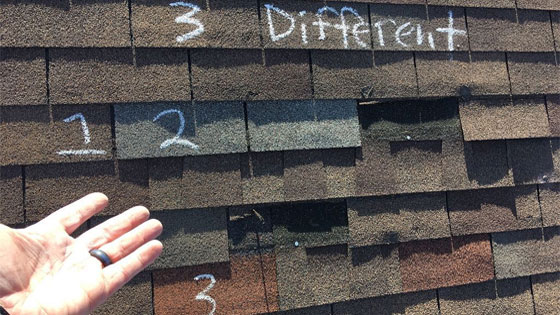
Inspection of Asphalt Shingles
Typically looking for hail & wind damage, missing shingles and/or blistering.
4 out of 5 residential homes in the United States have asphalt shingle roofs installed which can be found on mobile homes to mansions.
When it comes to roofing, few material options are as popular as asphalt shingles. An asphalt shingle roof is the top choice among homeowners and builders alike.
As Dallas/Ft. Worth's premier roofing contractor, I can attest to the many features and benefits that asphalt shingles bring.
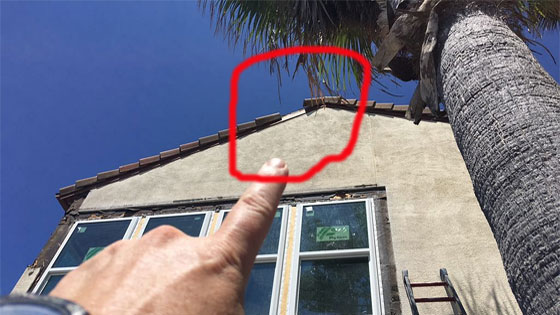
Inspection of Tile Roofs
Typically looking for missing or damaged tiles.
Any tiles that break subsequent to curing are due to mishandling, improper installation, misuse, improper foot traffic or severe impact or force. Severe impacts or forces, such as a tree branch or a heavy tool dropped onto a roof, can crack or break roof tiles.
In addition, tile roofs are not impregnable to hail, hurricanes or tornados! Studies show that some roof tiles can be damaged by hail as small as 1-1/4″ diameter.
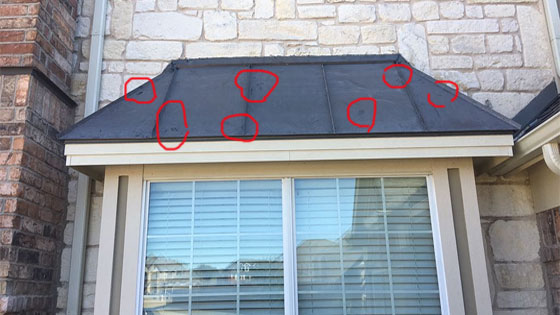
Inspection of Metal Roofs
Typically looking for leaks, blow-offs, ponding water, punctures & tears
Metal roofs are very tough and highly resistant to hail damage. Hail will not penetrate a metal roof. Even a new asphalt shingle roof won't protect a home from the next hailstorm.
Metal roofs don't need the periodic costly maintenance that other roofing materials often require. However, they should be inspected periodically to make sure no repairs are required.
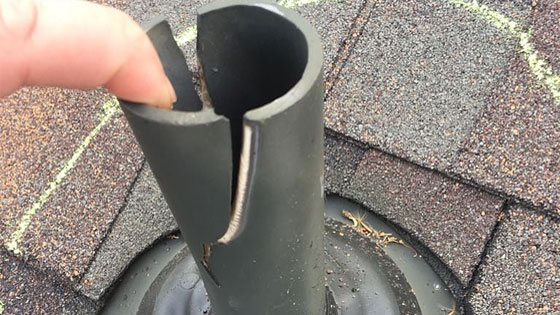
Inspection of Roofing Vent Pipes
Typically looking for cracked & worn rubber boots around vent pipes.
Plumbing vents are pipes that extend from the waste pipes to the outside of the building, often going through the roof. The vent pipes allow the sewer gases to escape to the outside, rather than being released inside the house. The vent pipes also allow oxygen into the waste pipes.
Vent pipes need regular maintenance and should be watched closely as they very commonly wear out due to our extreme Texas weather and leak pretty frequently.
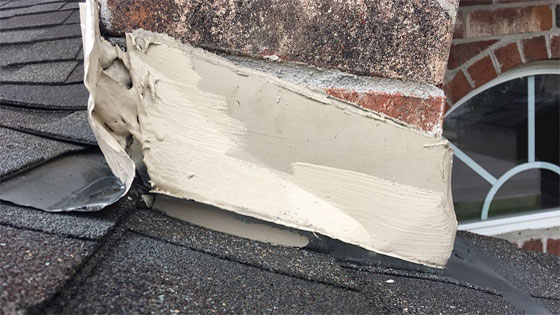
Inspection of Metal Roofing Flashing
Typically looking for rusted, broken, damaged & missing flashing
Roof flashing is one of the most critical parts of your roof. Flashing secures joints in your roof and places that tend to receive a lot of water, like valleys between slopes. With adequate flashing, water is directed away from vulnerable areas of the roof and into gutters.
Metal roof flashing is both a method and a device for keeping water from entering a structure at a roof penetration or joint. Flashing can be made of several kinds of materials, but the most flexible and durable are made of metal.
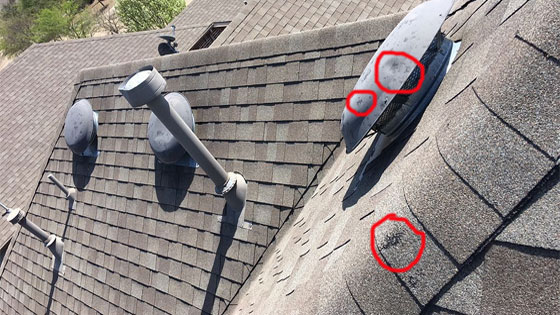
Inspection of Roofing Ventilation
Typically looking for the correct quantity and condition of existing
Cold air, heat, and moisture are easily trapped in the attic, and without proper ventilation, they will damage your attic and leak into your home. Moisture will breed mildew and rot, allowing the stack effect to pull mold spores into your living space and decreasing air quality.
Insufficient ventilation can lead to moisture problems during the winter and decreased energy efficiency during the summer but too much ventilation can be just as bad, if not worse. Roof vents create an additional roof penetration, essentially another place of vulnerability where leaks can occur.
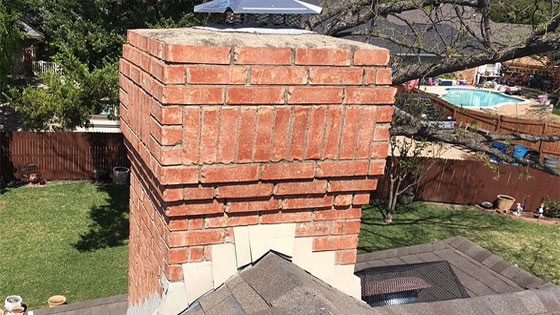
Exterior Inspection of Chimney
Typically looking for missing or damaged chimney cap; incorrectly installed flashing; no chimney cricket/saddle
Good chimney flashing includes sections of “step flashing” that run up the sides of the chimney, and “counterflashing.” Counterflashing fits into grooves cut into the chimney and covers the step flashing.
Chimneys need to be properly step-flashed and counterflashed so that water can't run down the face of the chimney and into the attic. You can't rely on caulk or roof cement to keep water out. If you suspect your flashing is shoddy, crawl into the attic after a heavy rain. Look for signs of water around the chimney and downhill from it.
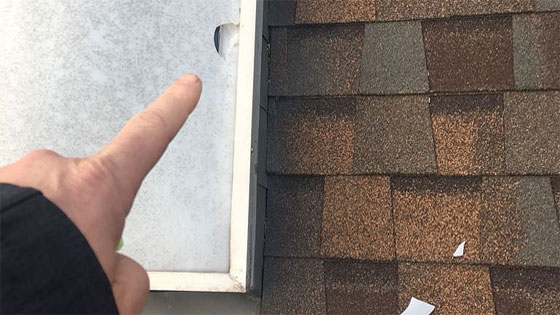
Inspection of Skylight
Typically looking for missing or damaged chimney cap; defective masonry or siding
Skylights are infamous – for leaking. Over time, the seals and flashing can deteriorate, providing an opportunity for water to penetrate your roof. Things like rain, snow, and debris can accelerate the process. Modern skylights are less prone to leaks than older versions, but even the best skylight can leak if it isn’t installed properly.
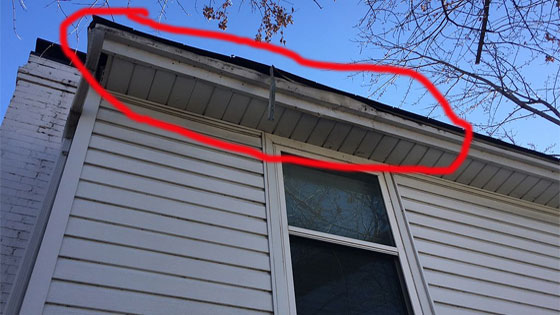
Inspection of Fascia & Trim
Typically looking for damaged or rotten fascia & wood trim
A roof edge that extends past the exterior wall line at the bottom of a slope. Fascia: Vertical roof trim located along the perimeter of a building, usually below the roof level, to cover the rafter tails at the eaves and to seal off the top of the siding along the rake; also called gutter boards.
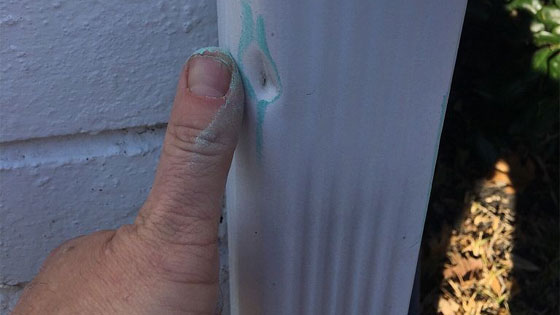
Inspection of Gutters & Downspouts
Typically looking for damaged or faulty materials & installation
A roof edge that extends past the exterior wall line at the bottom of a slope. Fascia: Vertical roof trim located along the perimeter of a building, usually below the roof level, to cover the rafter tails at the eaves and to seal off the top of the siding along the rake; also called gutter boards.
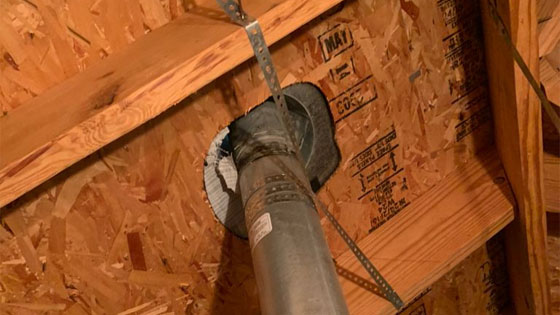
Inspection of Attic
Typically looking for damaged or rotten decking; water damage
An attic inspection is essential before a home purchase to check the following:
signs of damage caused to rafters or trusses, supporting the roof, indications of damages due to previous instances of fire in the house, current insulation rating or R-value of the attic, signs of wood staining or rotting and metal rusting around the furnace and evidence of critters and other pest infestations in the attic.